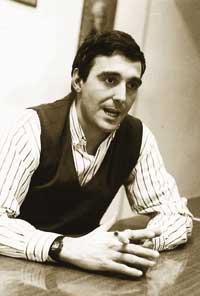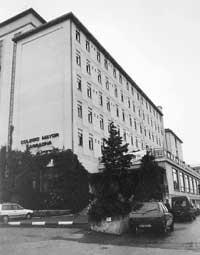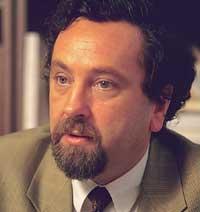UEU: 25 years in progress
1997/05/01 Mujika, Alfontso - Elhuyar Fundazioa Iturria: Elhuyar aldizkaria
First time: San Francisco
Let's put it in the 70's. In the South, the pro-Basque movement – the world of ikastolas, literacy and Euskaldunization, etc. – is in full swing and is accompanied by the political struggle against the dictatorship. The Franco regime lives its last years and cannot cope with the impulse of a Basque culture in constant boom. In Iparralde, on the contrary, the atmosphere is quieter and the movement in favor of the Basque language, despite being much slower, is making its own way. Since 1970, Cultural Weeks were held annually in Baiona (Museo Vasco), organized by the associations Euskaldunak, Ikas and Fededunak. The aim of the organizers was to work Basque culture, although they also worked on religious issues; other objectives were mutual knowledge of the Basques and the creation of working groups. Piarres Xarriton and Jean Haritxelhar were the main organizers of these Cultural Weeks.
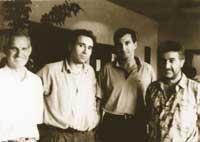
Years earlier, the Catalans, in the area of Rosellò, had launched the Universitat D’Estiu initiative and the great Basque thinker and vascophile Karlos Santamaría proposed giving a new touch to the Cultural Week of Baiona and turning it into a Summer University, based on the Catalan model. The idea was enthusiastically taken by the organizers of the Cultural Week and linked to the work. Manex Goienetxe of the Ikas group assumed the organization and the program. Jean Haritxelhar, through the University of Bordeaux, obtained the authorization of the French Ministry of Education and, with the approval of the advisors and mayors of the continental Basque Country and the sponsorship of Euskaltzaindia, at the Maurice Ravel Lyceum of San Juan de Luz, the Basque Summer University held its first day from September 28, 1973.
The day was organized in eight areas. It should be noted that these are not courses, but talks given by personalities of Basque culture. In total, about eighty students and teachers participated, most of them from Iparralde. In his small act, José Miguel de Barandiarán, Carlos Santamaría, Juan San Martín, Luis Villasante, Jean Haritxelhar, Patxi Altuna, Andu Saraslertxundi, Juan Juan San Martín, Juan Miguel de Murillo, Joseba Lausti, San Pedro, José Miguel, José.
The second event took place in the same place in 1974 and had about 110 participants. Following the line of the previous year, it was a series of conferences, but with the novelty that, although the model of master classes was not modified, two working groups participated: The Basque Cultural Seminars of Leioa and Elhuyar Kultur Elkartea, both energizers of the UEU from the beginning.
Second phase: Years of July
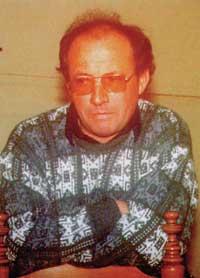
In the next two years, 1975 and 1976, the headquarters of the UEU was the House of the Occupied of Ustaritz. A dynamizing group, Euskal Kultur Mintegi, was formed by representatives of Elhuyar, Jakin and Euskaltzaindia, who organized the courses and collected grants. There were many students from the South. It was then that the EU made its first manifesto (1975): it claimed the need for a true Basque university, the university puzzles that existed at that time in Euskal Herria (in the South the University of Deusto and the University of Navarra, both private and more public: The University of Bilbao, the University of Valladolid in Araba and Gipuzkoa and the University of Zaragoza in Navarra; in Iparralde, the Universities of Bordeaux and Pau), for understanding that it did not meet the needs and aspirations of Euskal Herria. The EU also defined the three main characteristics that the future Basque University should have: being euskaldun (which will speak Basque), covering the entire Basque Country and being a citizen (open to all).
During the day of 1976, several people and collectives from Euskal Herria showed themselves in favor of the EU, such as Julio Caro Baroja, José Miguel Barandiaran, Xabier Arzallus, Real Sociedad Bascongada de Amigos del País, Colegio de Arquitectos Vasco-Navarro, etc. There were more students and the first step towards specialization was taken: in the afternoon seminars the sciences and letters differed. Manex Goihenetxe, who until then had turned into the work of organization, presented a full resignation of work; it was not easy to find a responsible at the height of Manex and, along with that concern, opened a debate on the transfer of the UEU from North to South: that the majority of the participants were from the South, that the main weight of the Basque culture persian south and that the majority of the Basques were from Vesires Finally, after discussing the arguments in favor and against, it was decided to move the EU to the South at the meeting of the last day. In addition, Martin Orbe, the new EU secretary, was elected.
Third phase: UEU in Pamplona
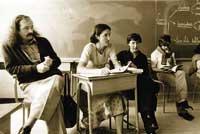
Martin Orbe began with great enthusiasm the creation and consolidation of the EU structure in the South, together with the Collaborating Group. Obtaining the authorization for the event was difficult (through letters received between Martín Orbe and the then Spanish Minister of Interior, Rodolfo Martín Villa), but, finally, less than a month after the beginning of the courses, came the authorization of the Spanish Ministry of Education and Science. In Pamplona, the historic capital of Euskal Herria, the UEU began its third edition to this day. The first day in Hegoalde (1977) was very important: on the one hand, specialized, departmental classes were organized for the first time. On the other hand, the EU published its first books, the first published in Basque at the university level. On behalf of the Basque parliamentarians present in Madrid, Manuel de Irujo sent a telegram of adhesions that symbolized the will of the EU or, rather, of the EU, of the Basque University. This must be understood well, the main contribution of the EU to the old idea of the Basque university has been the need for Euskaldunization, since the EU has launched and defended – in addition, through practices – the need for a university in Basque for the first time.
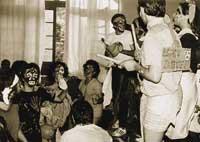
In 1978 the path started the previous year is consolidated: participants are expanded, specialties are strengthened and book production is advanced. Since then, the EU has continued on that path, has reached adulthood and has undergone changes—participants, departments, managers have changed—but the main line of work is the same. The UEU was based on the work of the Basque militants and remains so. It has a professional secretariat, but the rest of those responsible – the director, the members of the Executive Team, the directors – do not receive any salary and the authors of the books edited by the EU do not receive copyright. The EU receives the help of public institutions and is essential, but without this militant work there would be no EU.
In Iparralde also UEU
Since its consolidation in the South, the EU has lost most of its members in the North. Therefore, in 1985 he began to teach courses adapted to the cultural needs of Iparralde in Baiona, and since then he has maintained this double path: Pamplona and Bayonne. The organizational model, duration and volume of the Baiona courses are quite different from those of Pamplona. However, in the last two years there have been some changes and students from the South have also started to go to Baiona, since the offer of Baiona is also interesting for the people of the South.
Annual activity
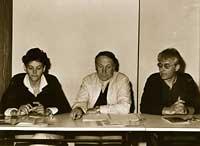
The work of the EU does not end in summer; in addition to the main courses, it organizes cycles of conferences of informative character throughout the year since 1985: In Donostia, Bilbao, Vitoria-Gasteiz, Pamplona, .. and, in addition, the production of books is the result of a year-round work (almost 200 books published in 25 years). Not only that, but throughout the year departments hold work meetings for the preparation of the courses and to all the above must be added the quarterly magazine of social and human sciences Uztaro since 1990.
All this has led us to the present reality of the EU. Here we have taken a look at this twenty-five years. But what else is the EU? In addition to courses, books, etc., it is a meeting place for university students from all over Euskal Herria, a symbolic space of the will of the Basque university (using the fashionable word “virtual” Basque university), very important. To this objective, that torch, the EU remains firm, without any exclusivism or pretext of protagonism, humble but firm and always working. Hoping that it will not take another twenty-five years to reach the Basque University.

Gai honi buruzko eduki gehiago
Elhuyarrek garatutako teknologia




